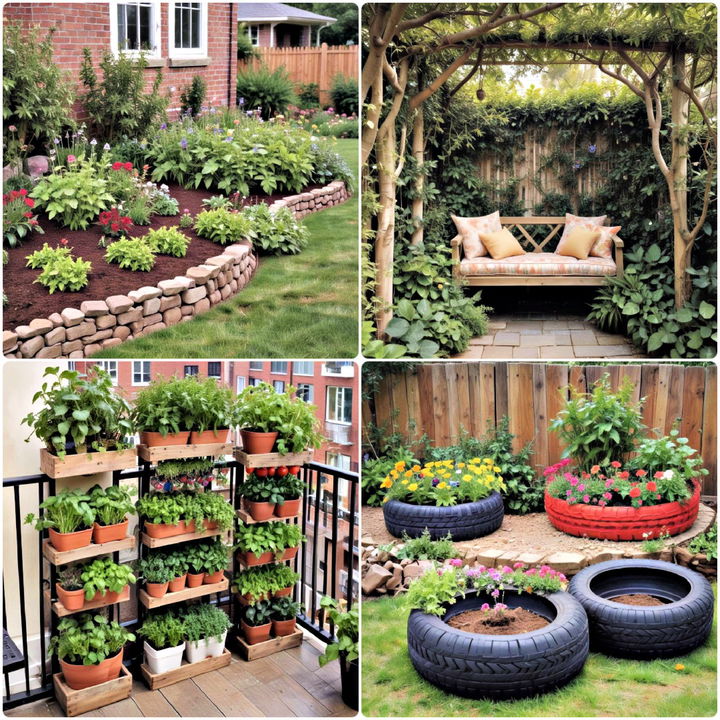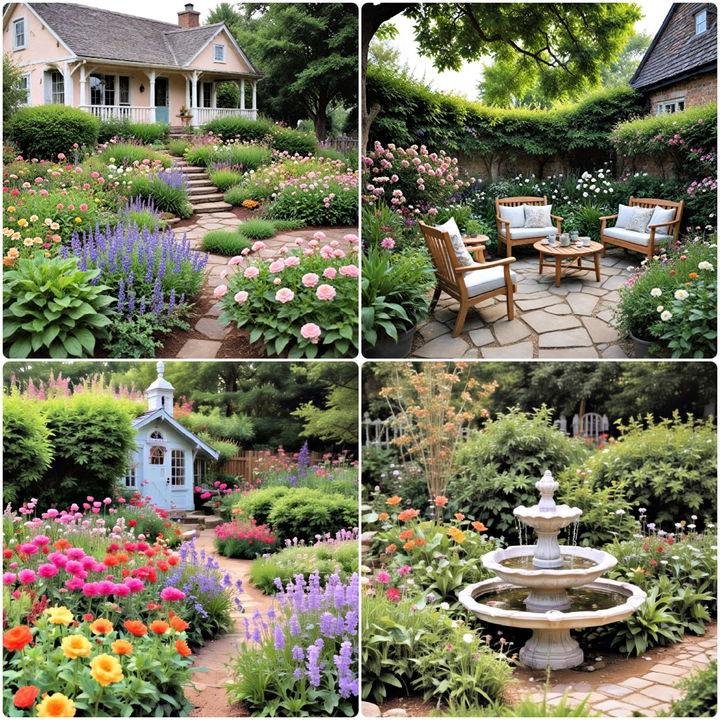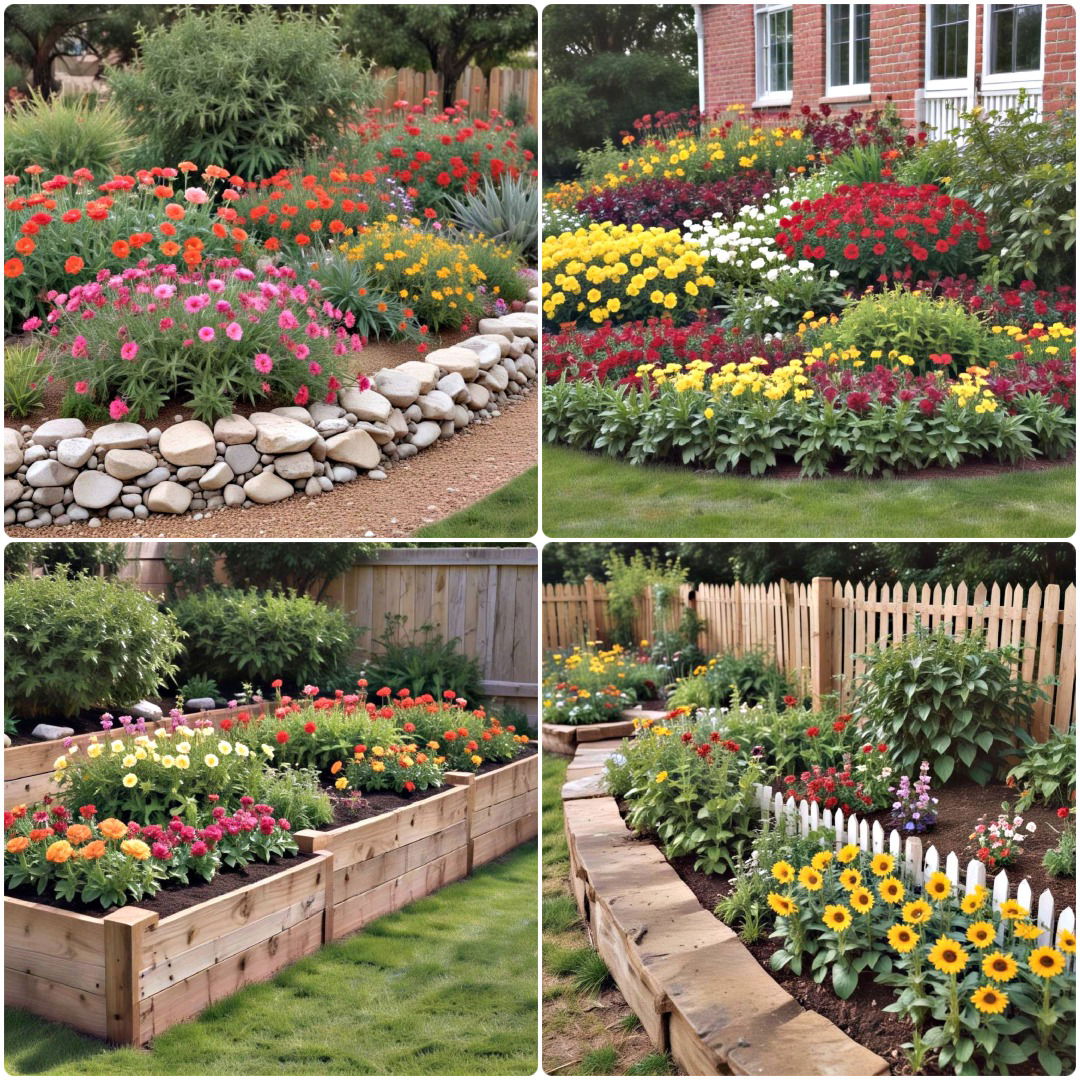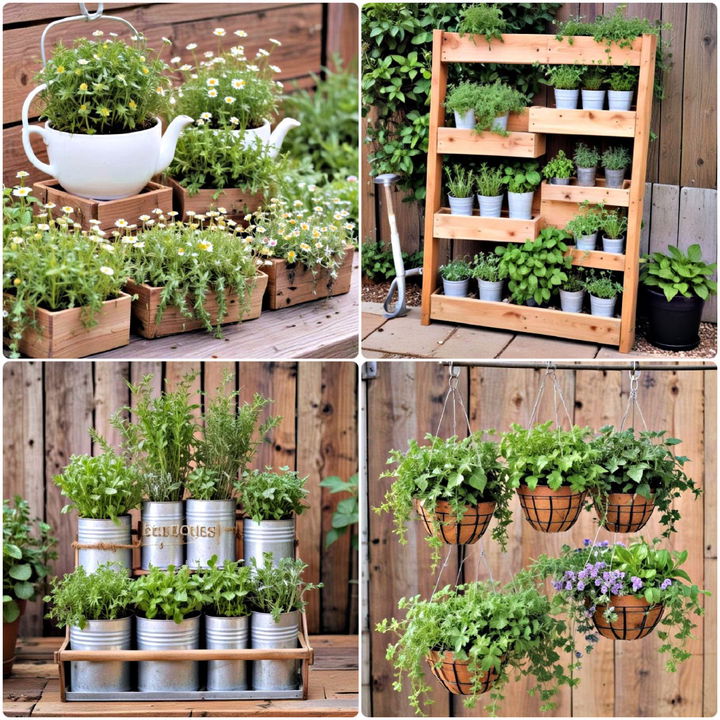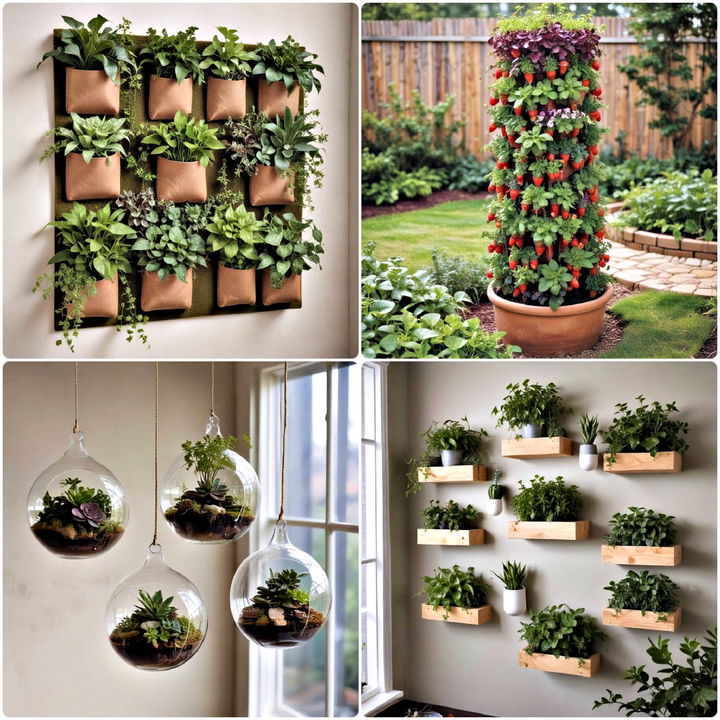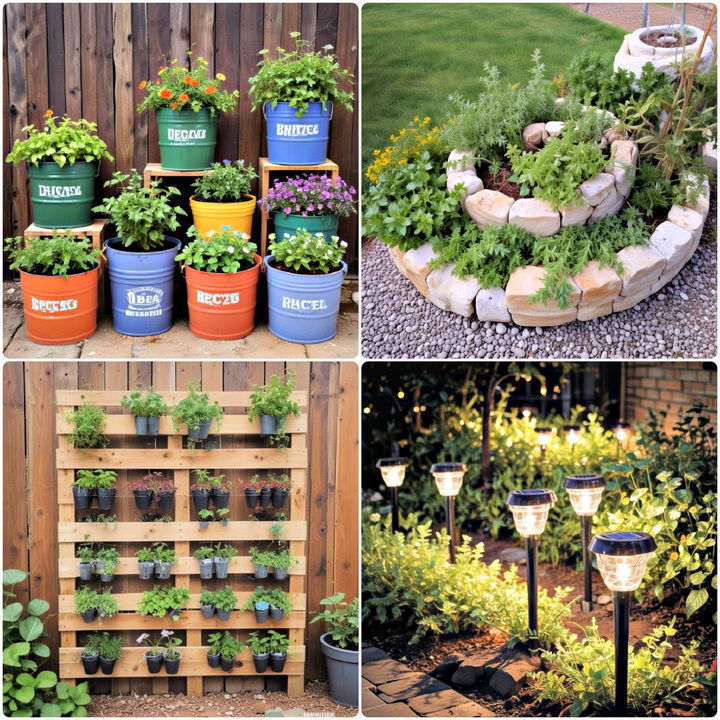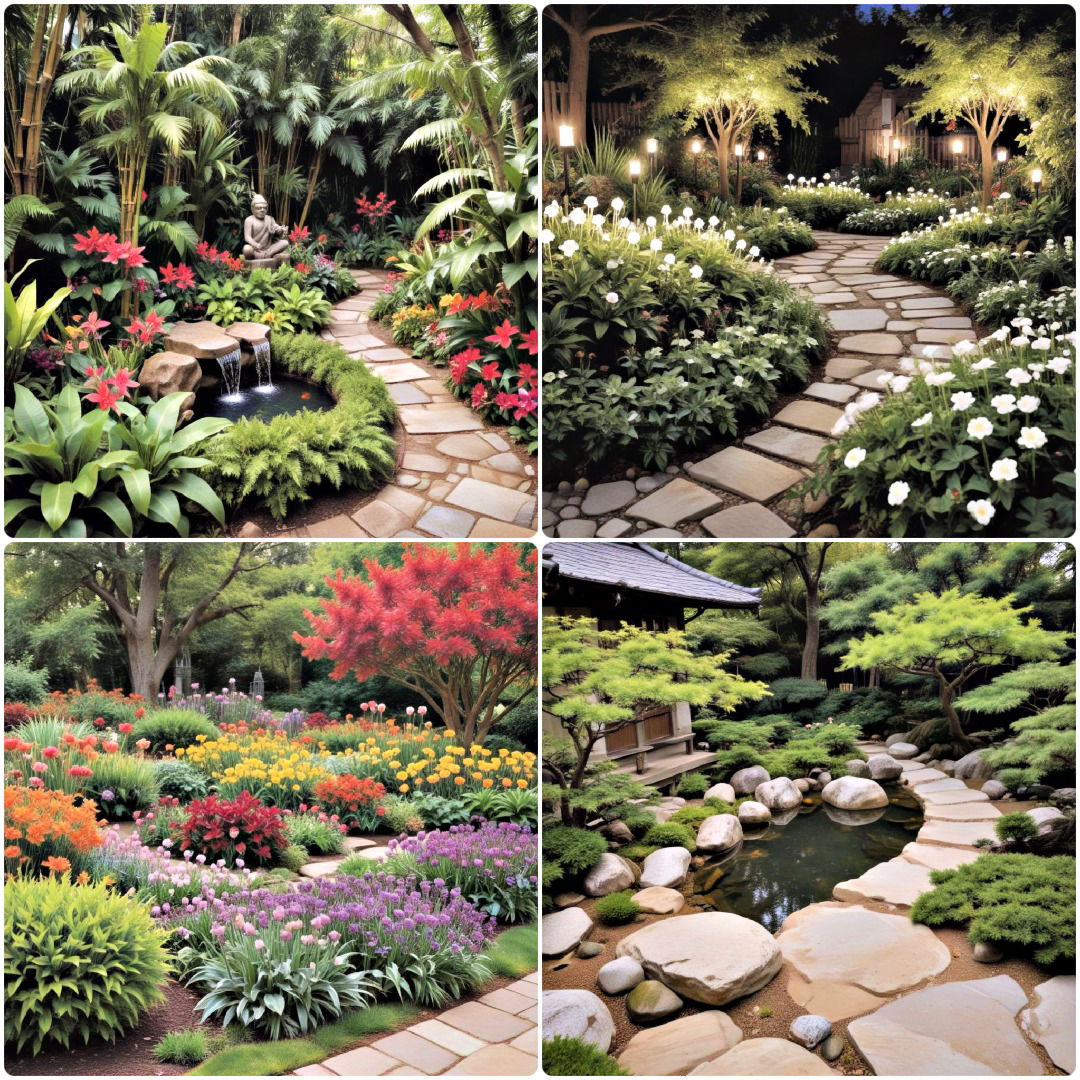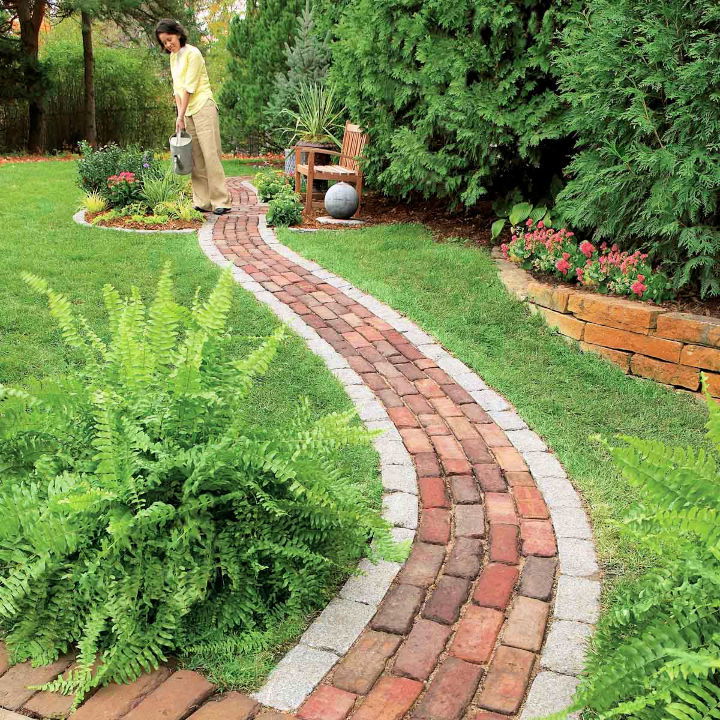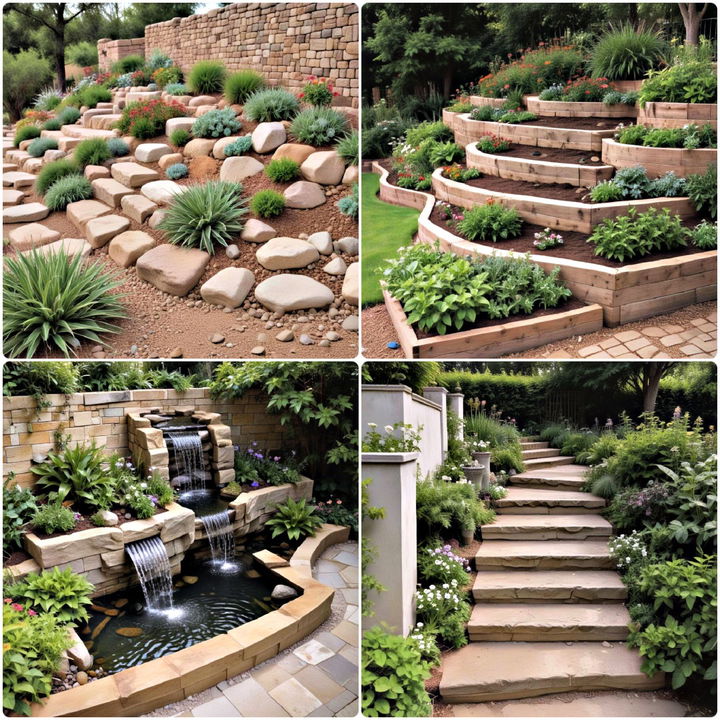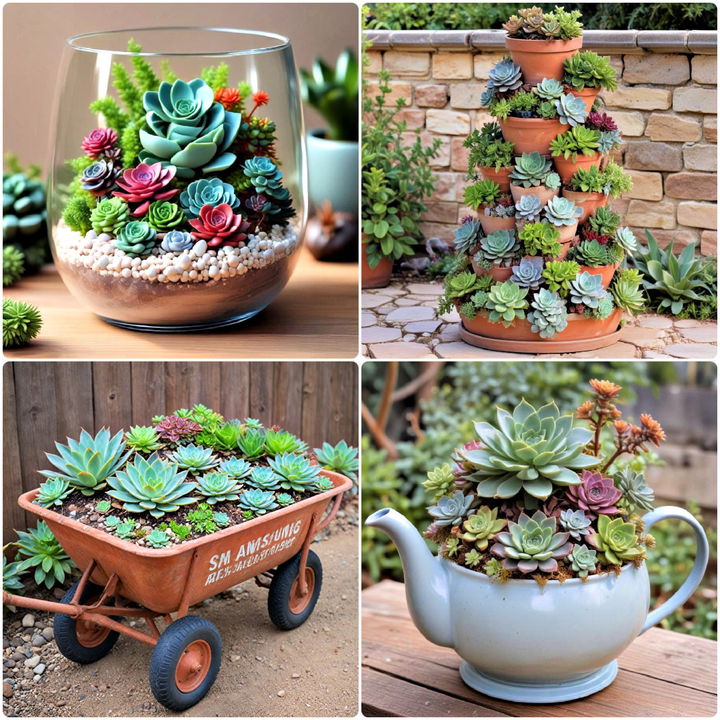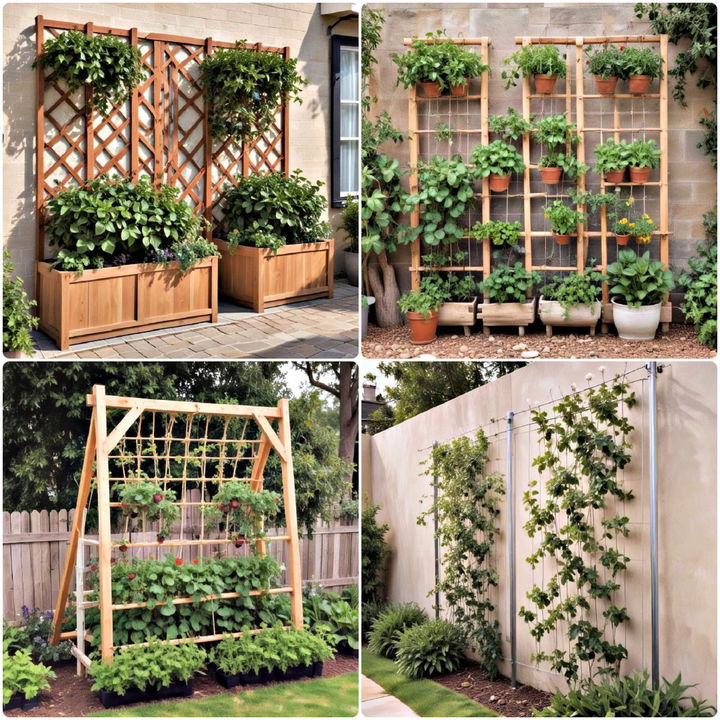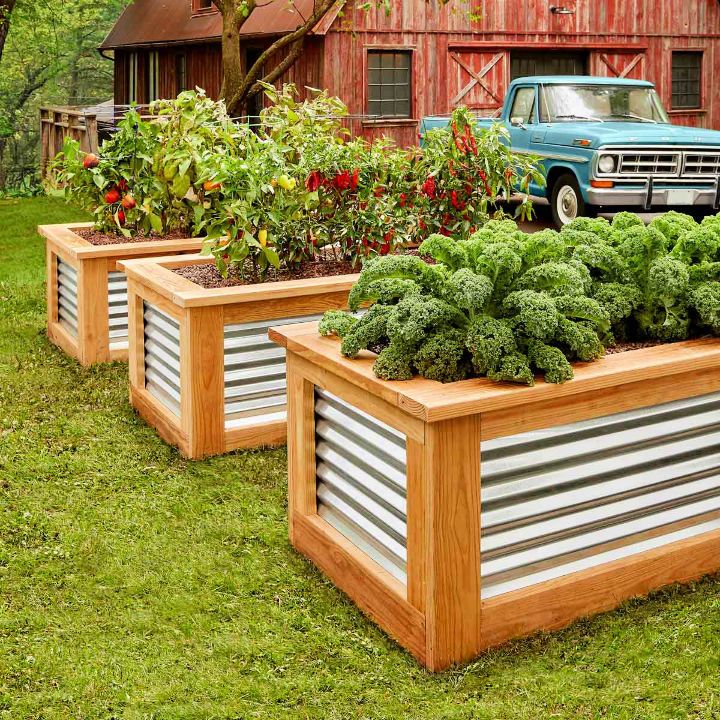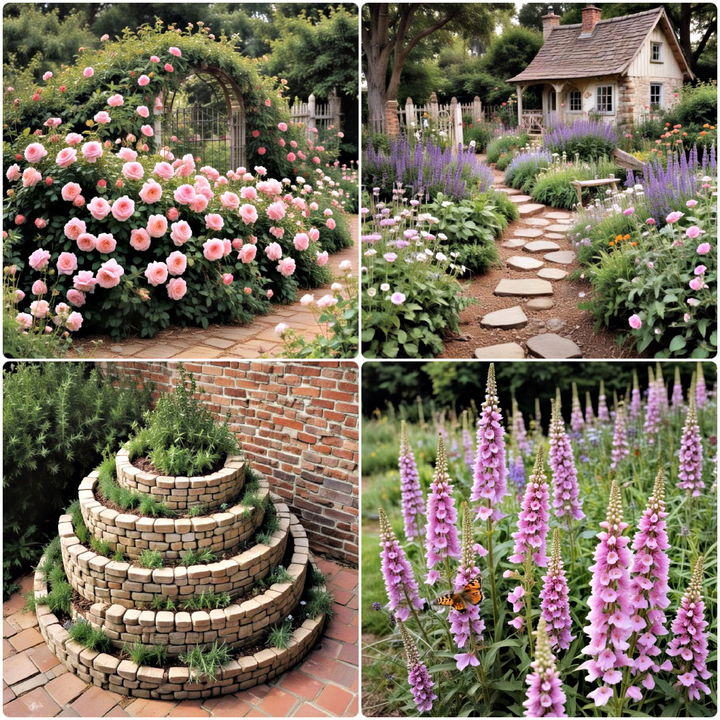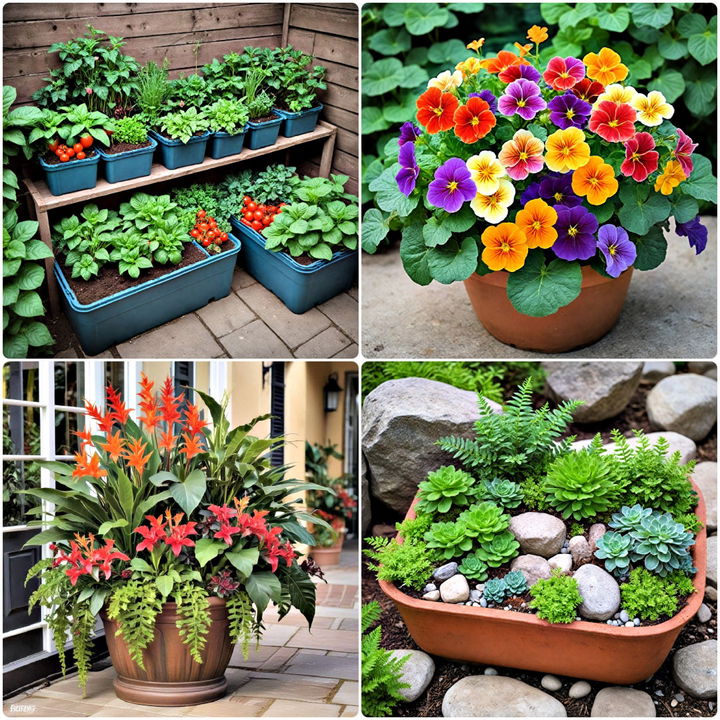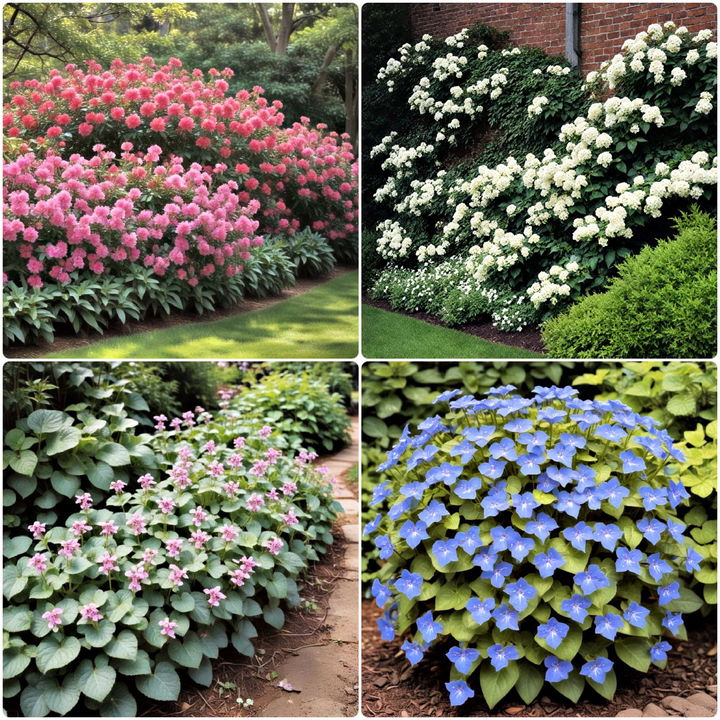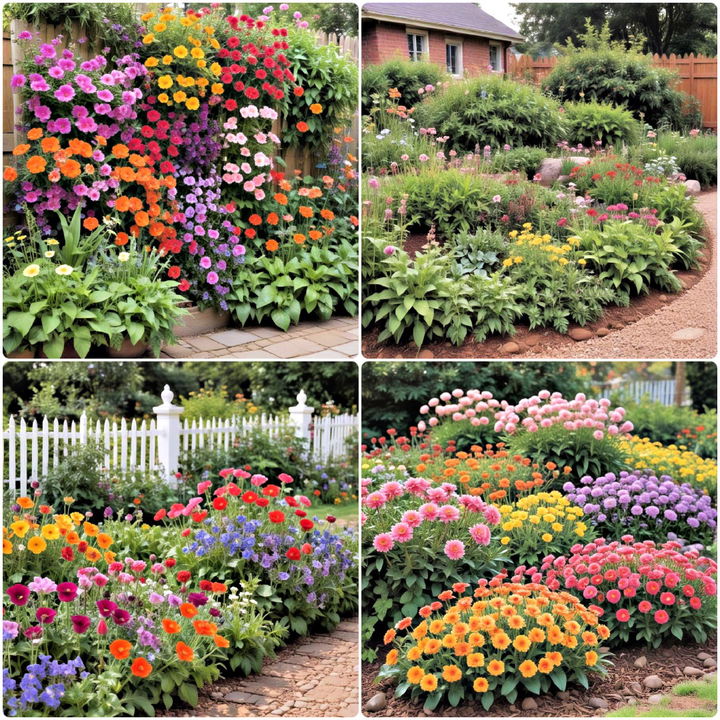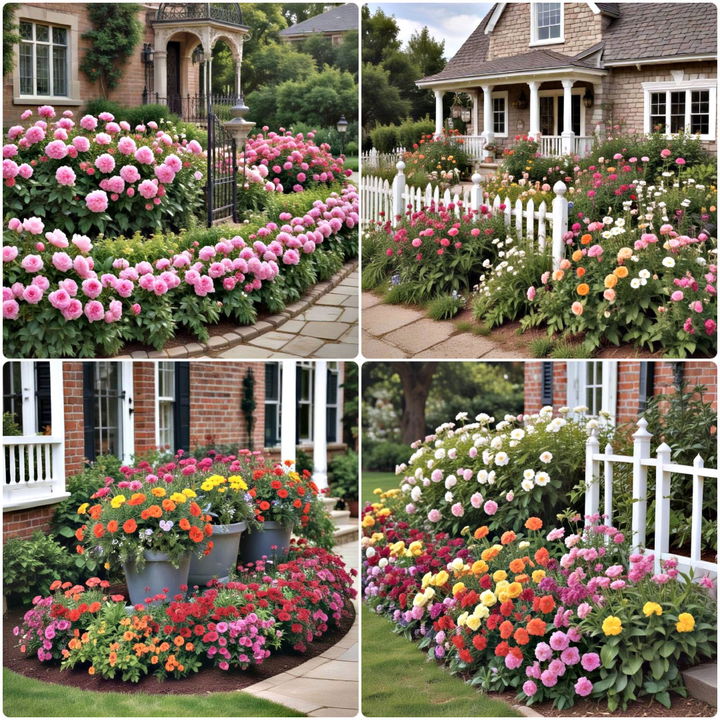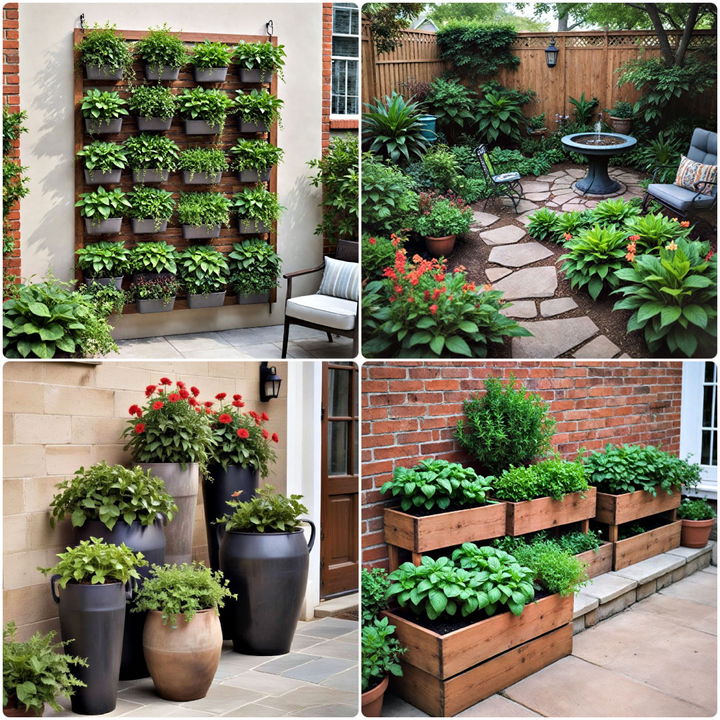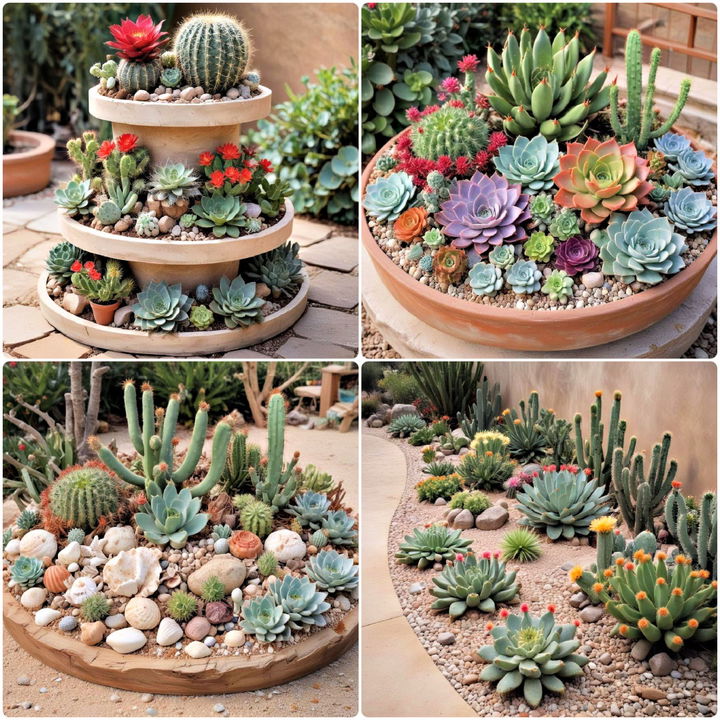Creating a stunning wildflower garden can bring vibrant colors and life to your outdoor space. With the right wildflower garden ideas, you can have beautiful blooms that last throughout the year. Start by selecting a variety of native wildflower seeds suitable for your region. This ensures they thrive and support local wildlife.
If you want to maintain a healthy and visually appealing garden, consider planting wildflowers in patches or rows. This approach makes it easier to manage the garden and enhances its natural beauty. Regular watering and occasional weeding will keep your wildflower garden flourishing.
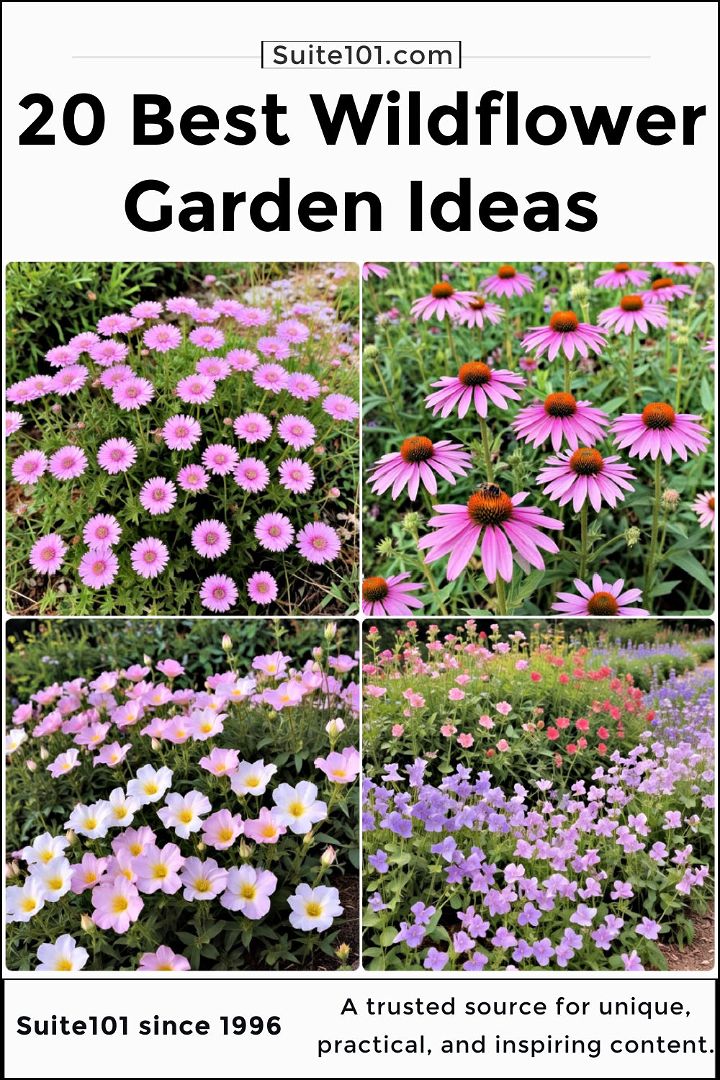
Discover 20 wildflower garden ideas to transform your outdoor space into a vibrant, eco-friendly haven bursting with colorful blooms.
1. Vibrant Meadow Mix
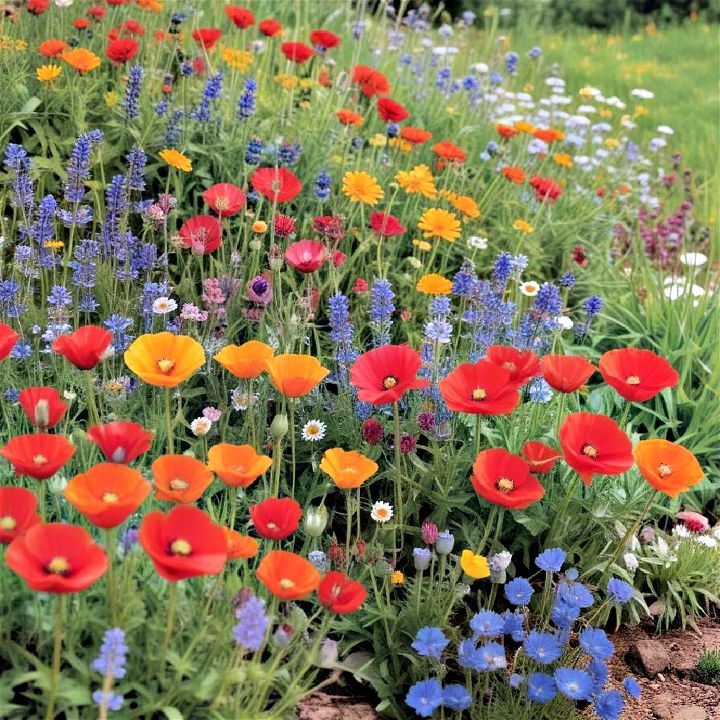
Visualize a vibrant meadow mix that includes a variety of colors and textures. This design idea introduces a blend of perennials and annual wildflowers like poppies, daisies, and cornflowers, creating a lively and ever-changing garden. Such gardens flourish with minimal care and provide a natural habitat for pollinators like bees and butterflies.
2. Native Plant Haven
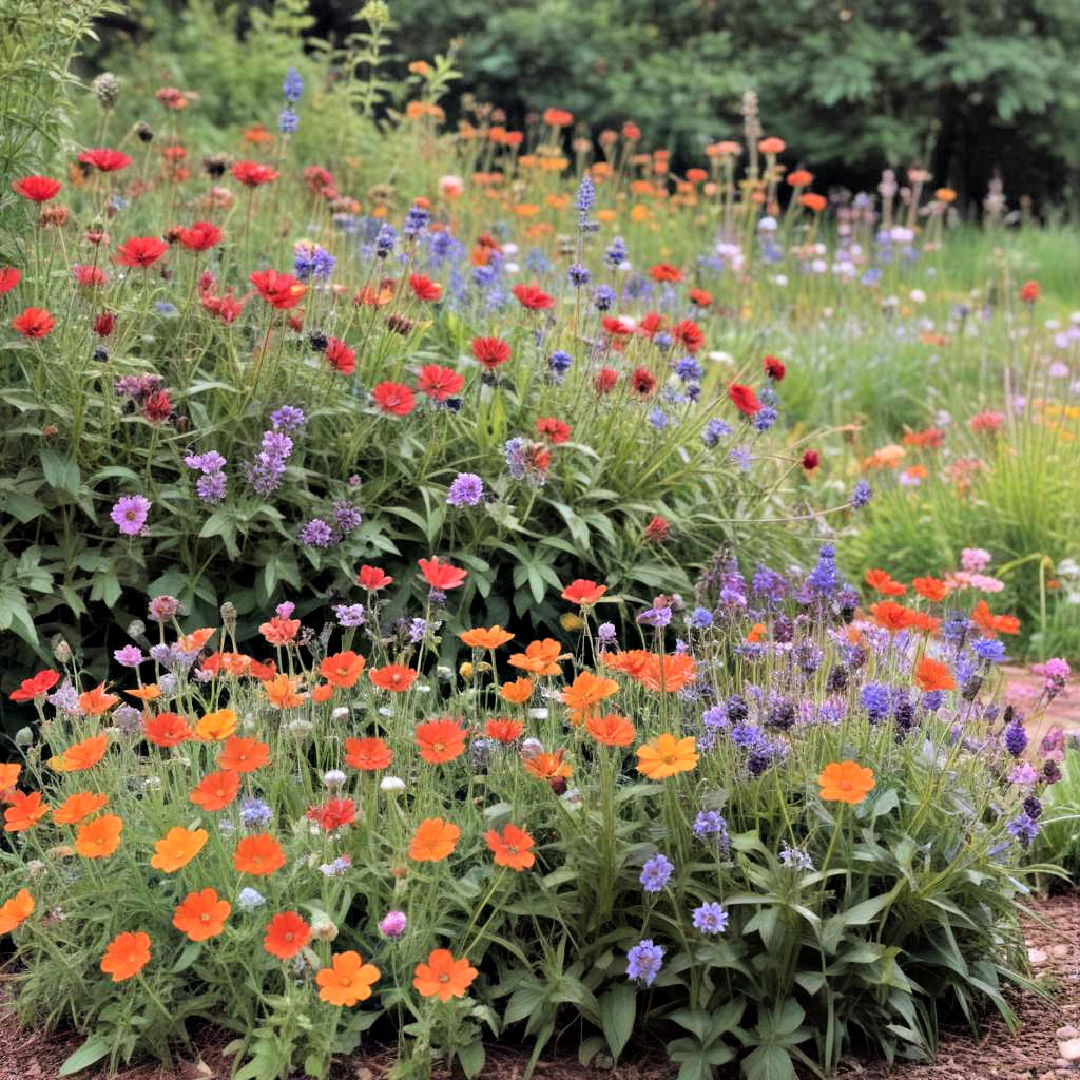
Consider a native plant haven that supports local ecosystems. Using perennial wildflowers indigenous to your region can boost biodiversity and reduce maintenance. These hardy plants are well-suited to the local climate, often requiring less water and fewer fertilizers, fostering a sustainable and eco-friendly garden space.
3. Cottage Garden Charm
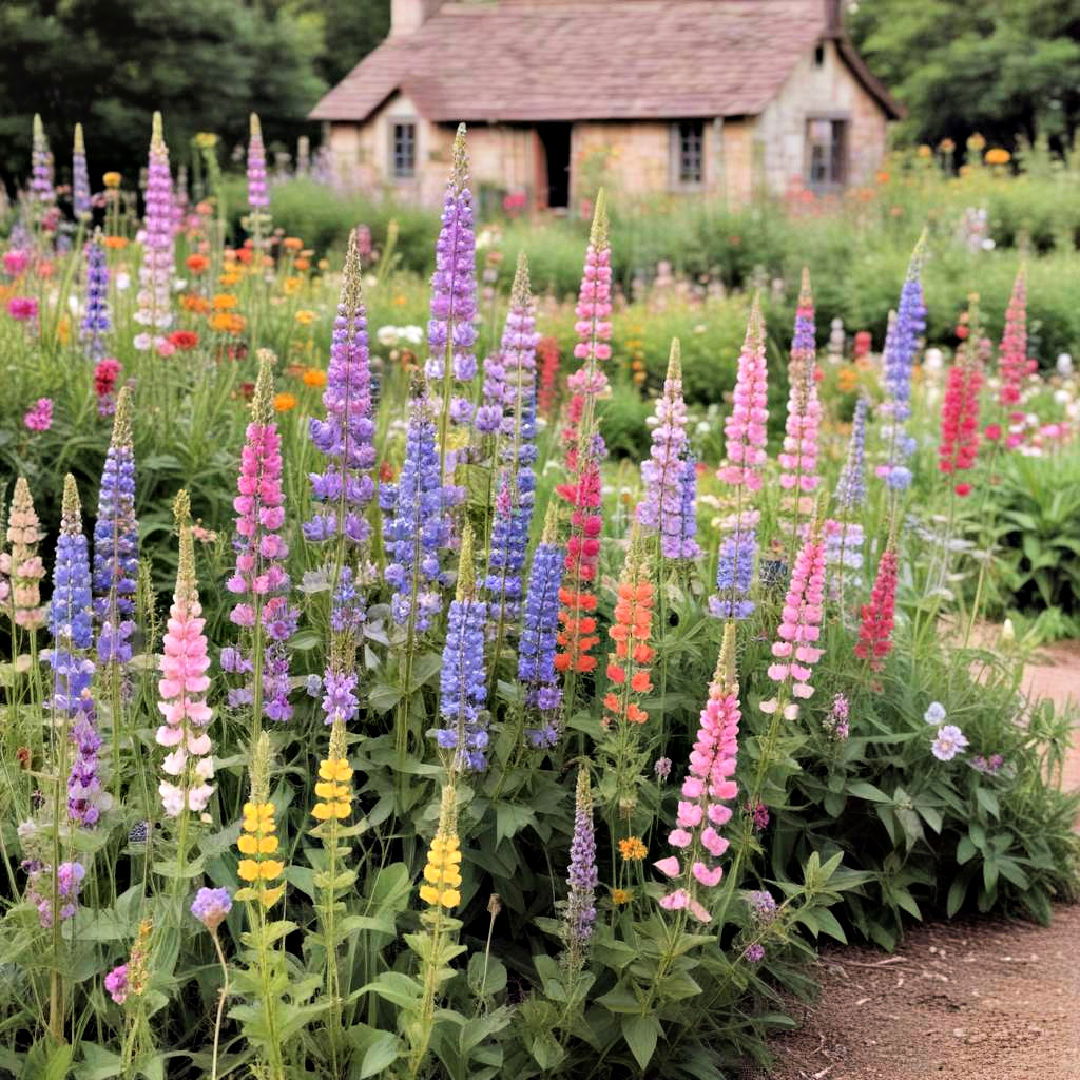
Discover stunning wildflower garden ideas to enhance your outdoor space effortlessly. A cottage garden charm is all about a dense planting style with an informal arrangement. Mix wildflowers like lupines, hollyhocks, and foxgloves to create a whimsical, old-world atmosphere reminiscent of historic English pastoral settings. This garden style offers continuous blooms and a cozy, enchanting appeal.
4. Pollinator Paradise
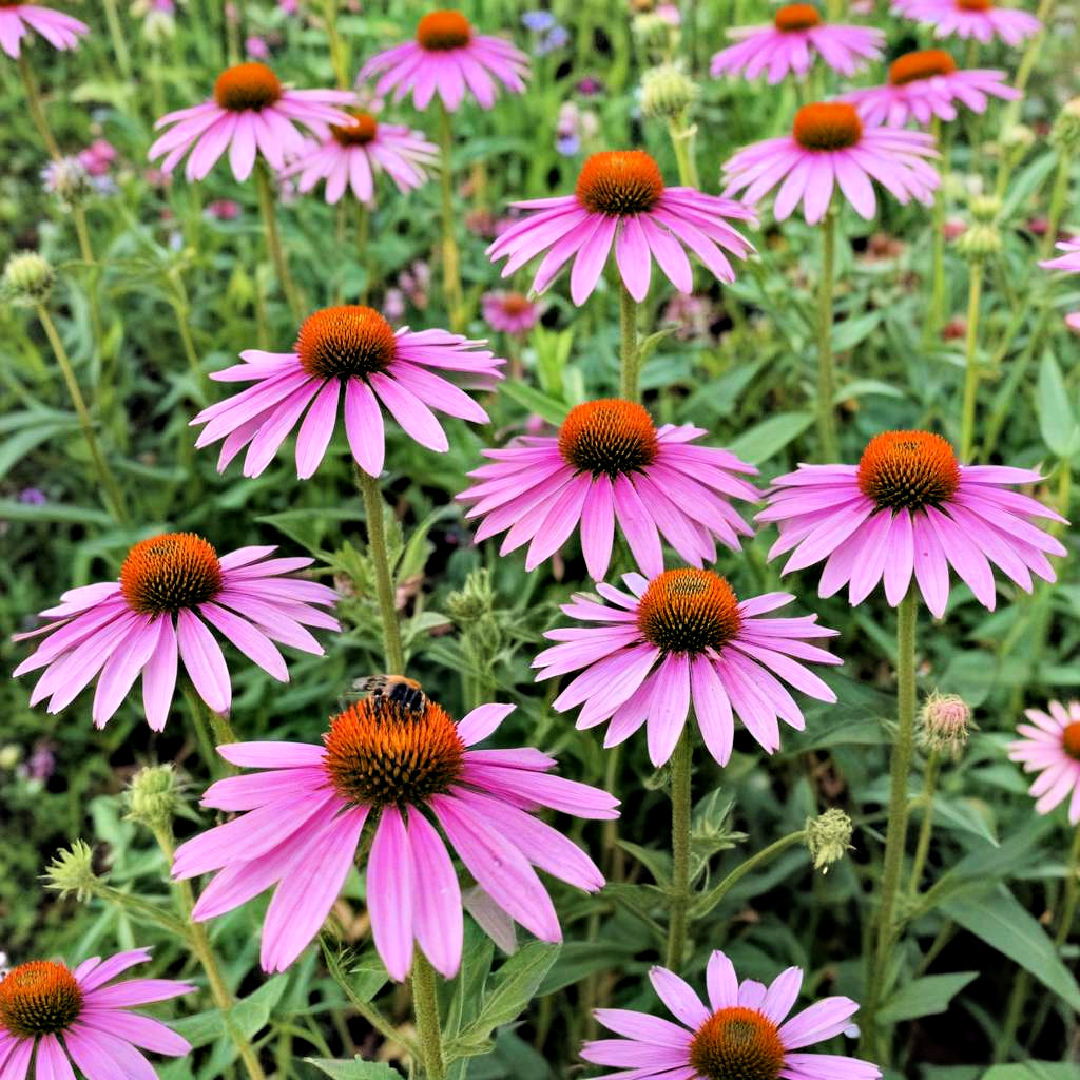
Envision a pollinator paradise designed to attract bees, butterflies, and birds. Incorporate a mix of nectar-rich wildflowers like coneflowers, bee balm, and milkweed. This garden not only becomes a hub of activity but also supports pollinator populations, essential for the healthy functioning of ecosystems.
5. Edible Wildflower Plot
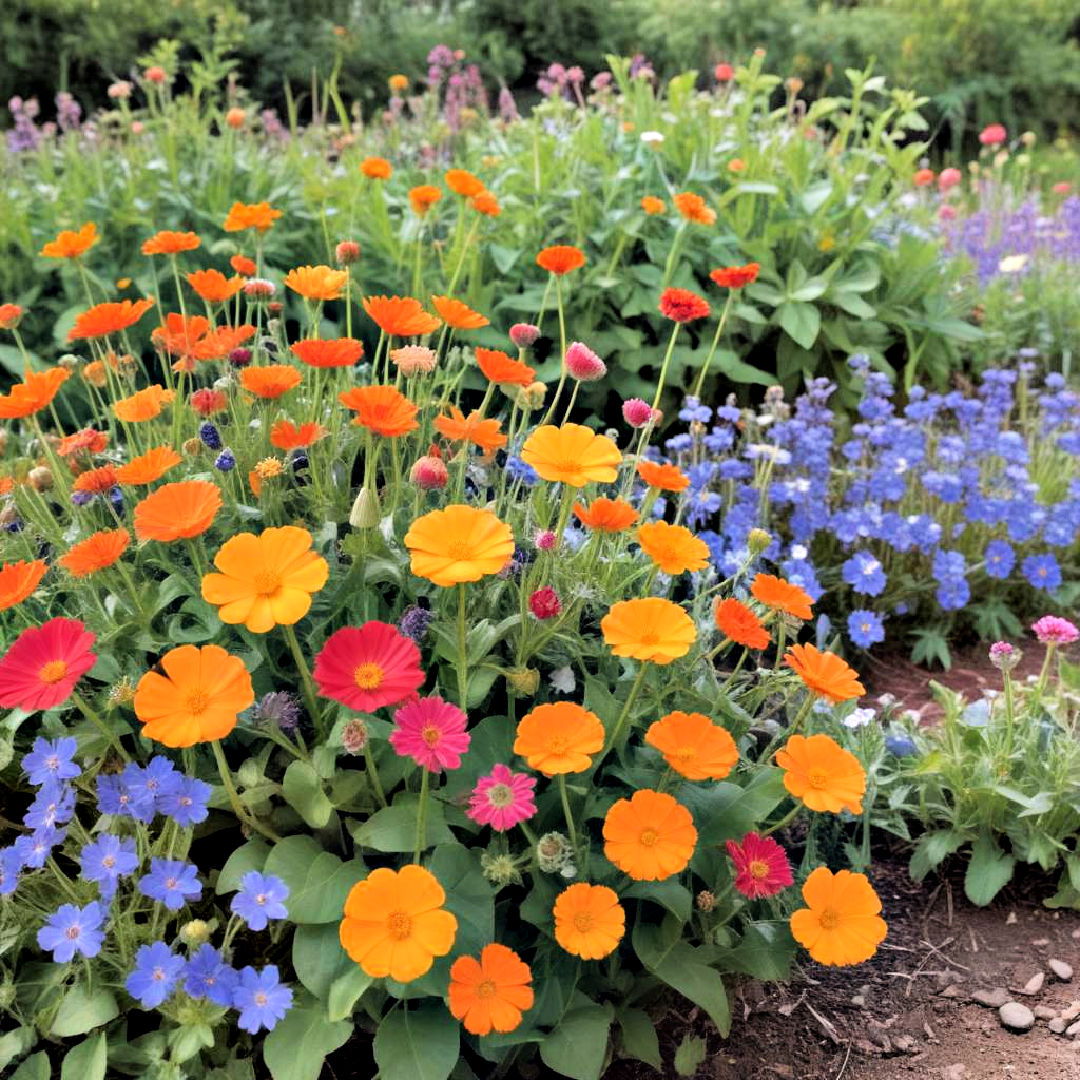
An edible wildflower plot introduces a functional aspect to your garden. Plant wildflowers like calendula, nasturtium, and borage, which are not only beautiful but also edible. This design combines aesthetic appeal with utility, enriching your culinary adventures with fresh, home-grown ingredients and bright flavors.
6. Color-Themed Wildflower Beds
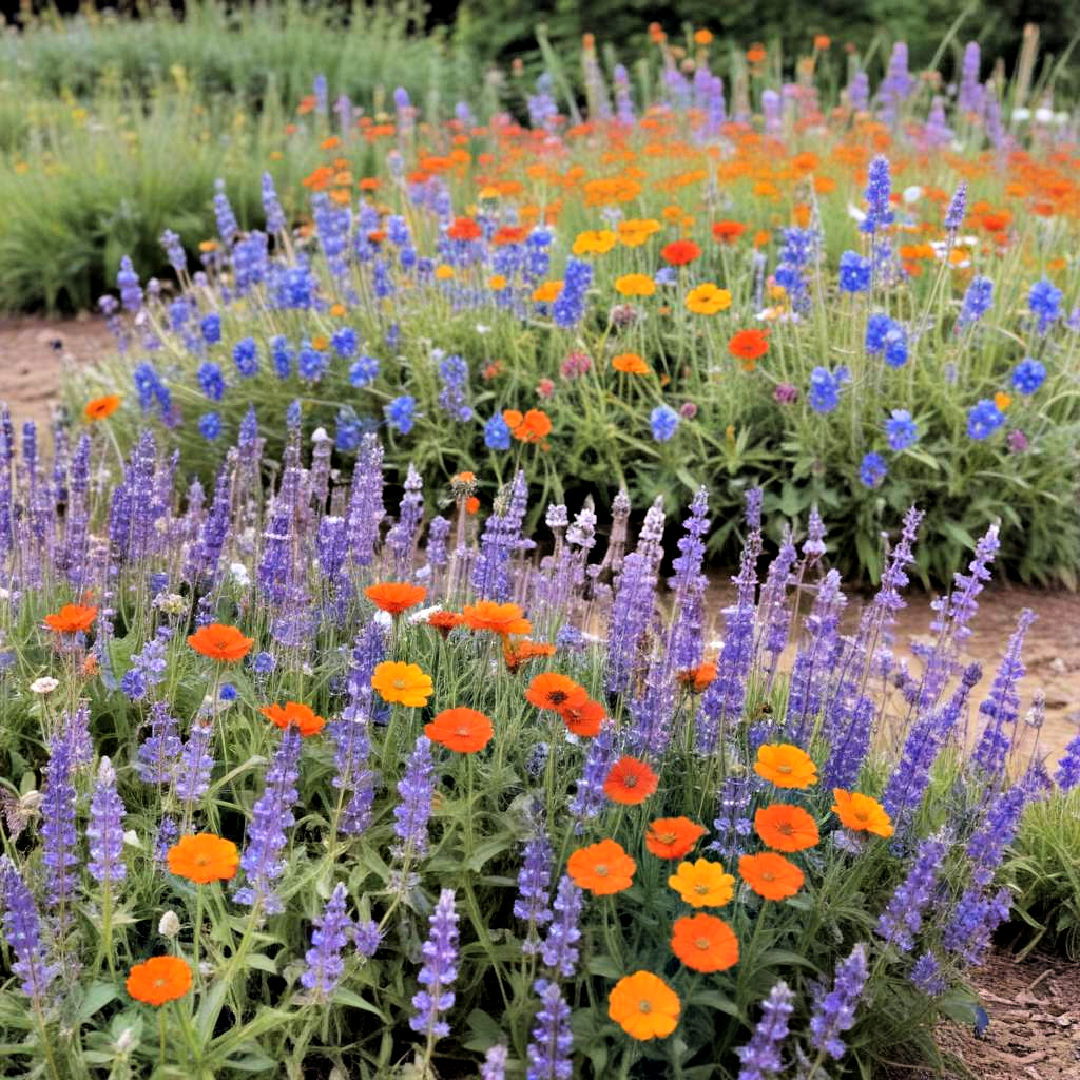
Imagine color-themed wildflower beds that bring a cohesive look to your garden. Use plants that bloom in similar hues, such as purple and blue tones with lavender and delphinium, or warm shades with marigolds and zinnias. This approach makes each section of your garden visually striking and harmonized.
7. Seasonal Blooms Succession
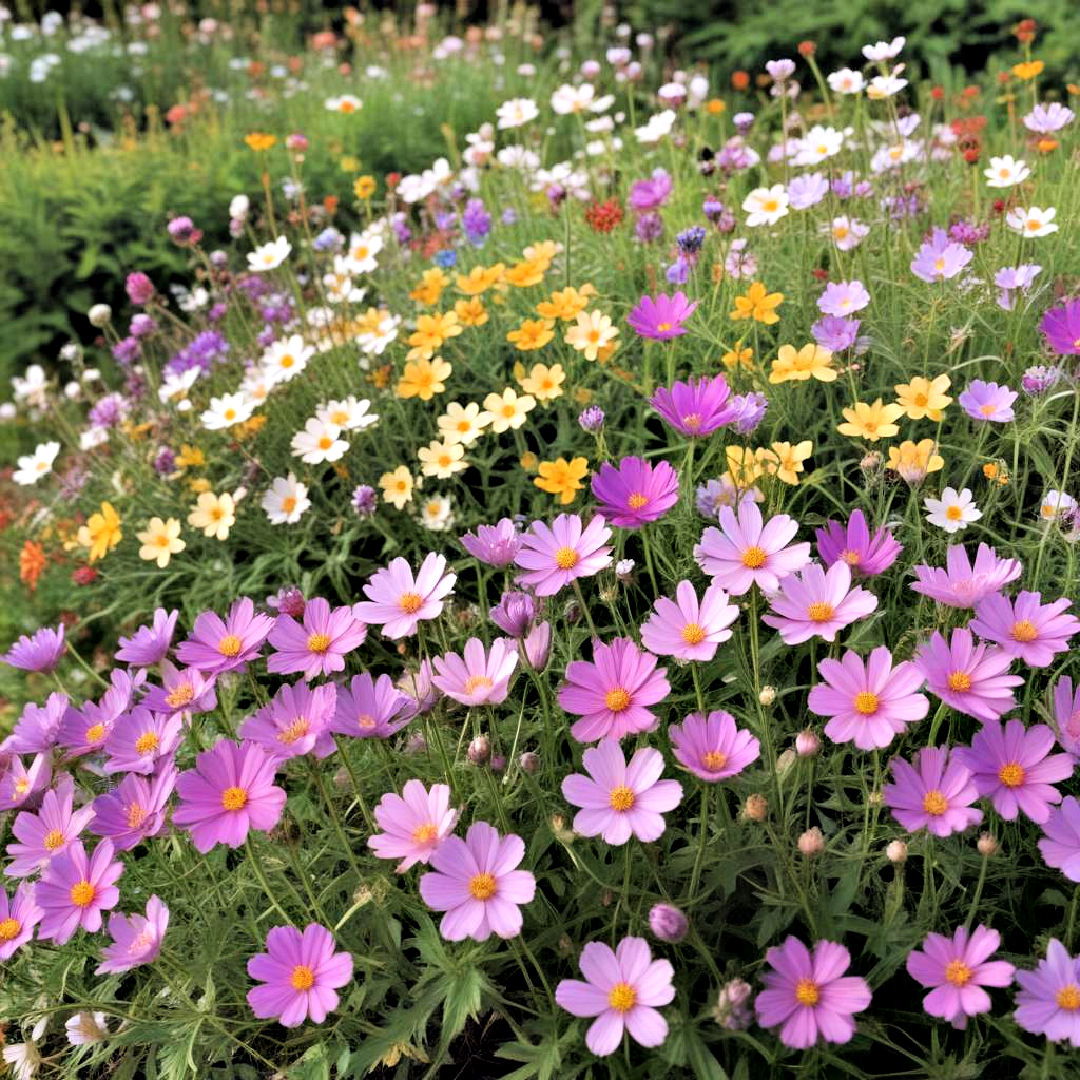
Try a seasonal blooms succession to ensure year-round interest. Plant wildflowers that bloom at different times of the year, such as crocuses in spring, cosmos in the summer, and asters in autumn. This keeps your garden dynamic and offers continuous visual delight from season to season.
8. Butterfly Garden Delight
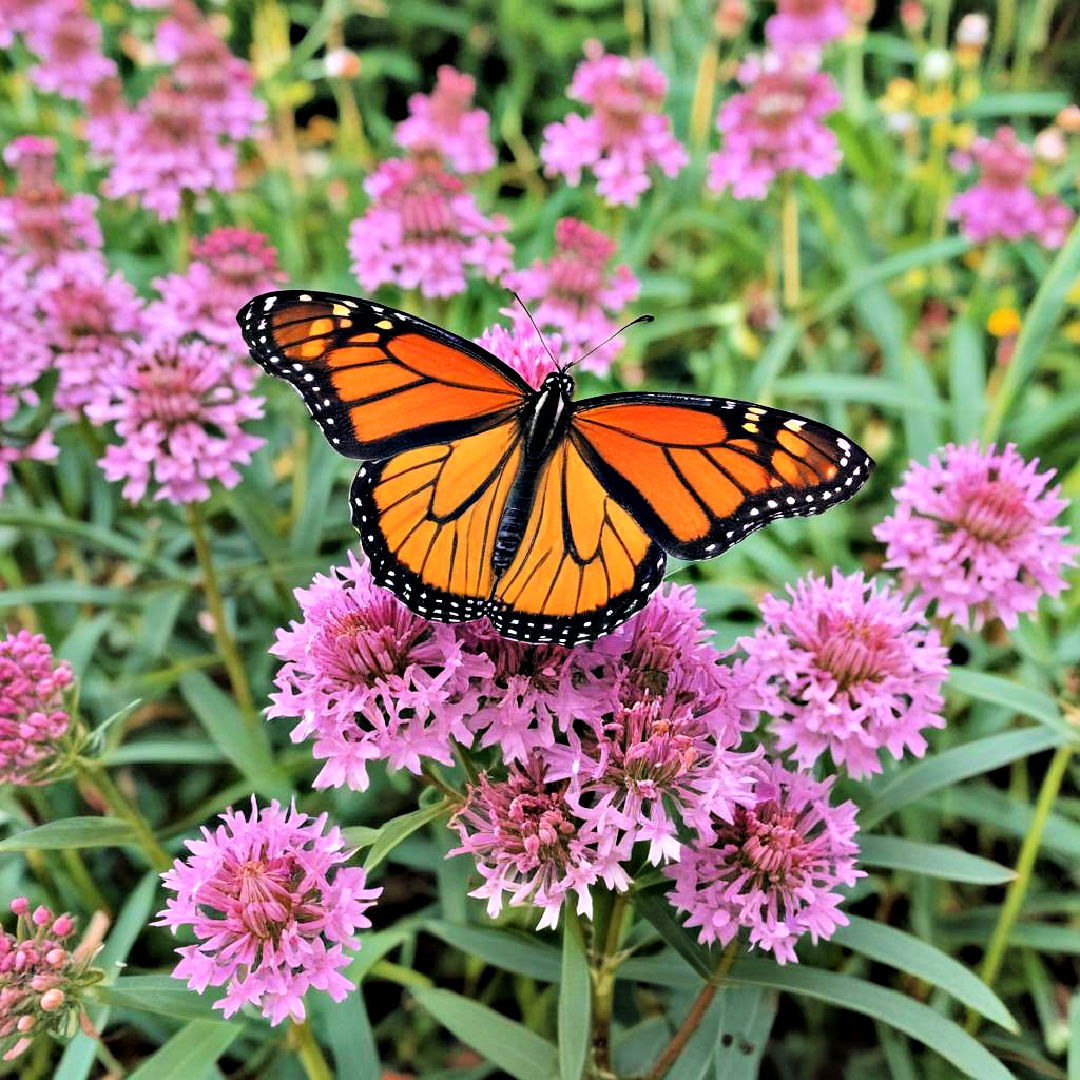
Explore beautiful wild flower garden ideas for a lush, natural landscape. A butterfly garden delight is designed to attract and support butterflies specifically. Plant milkweed for monarchs, along with aster and goldenrod. These flowers provide nectar and serve as host plants for caterpillars, creating a magical environment where you can observe the life cycle of butterflies firsthand.
9. Urban Wild Oasis
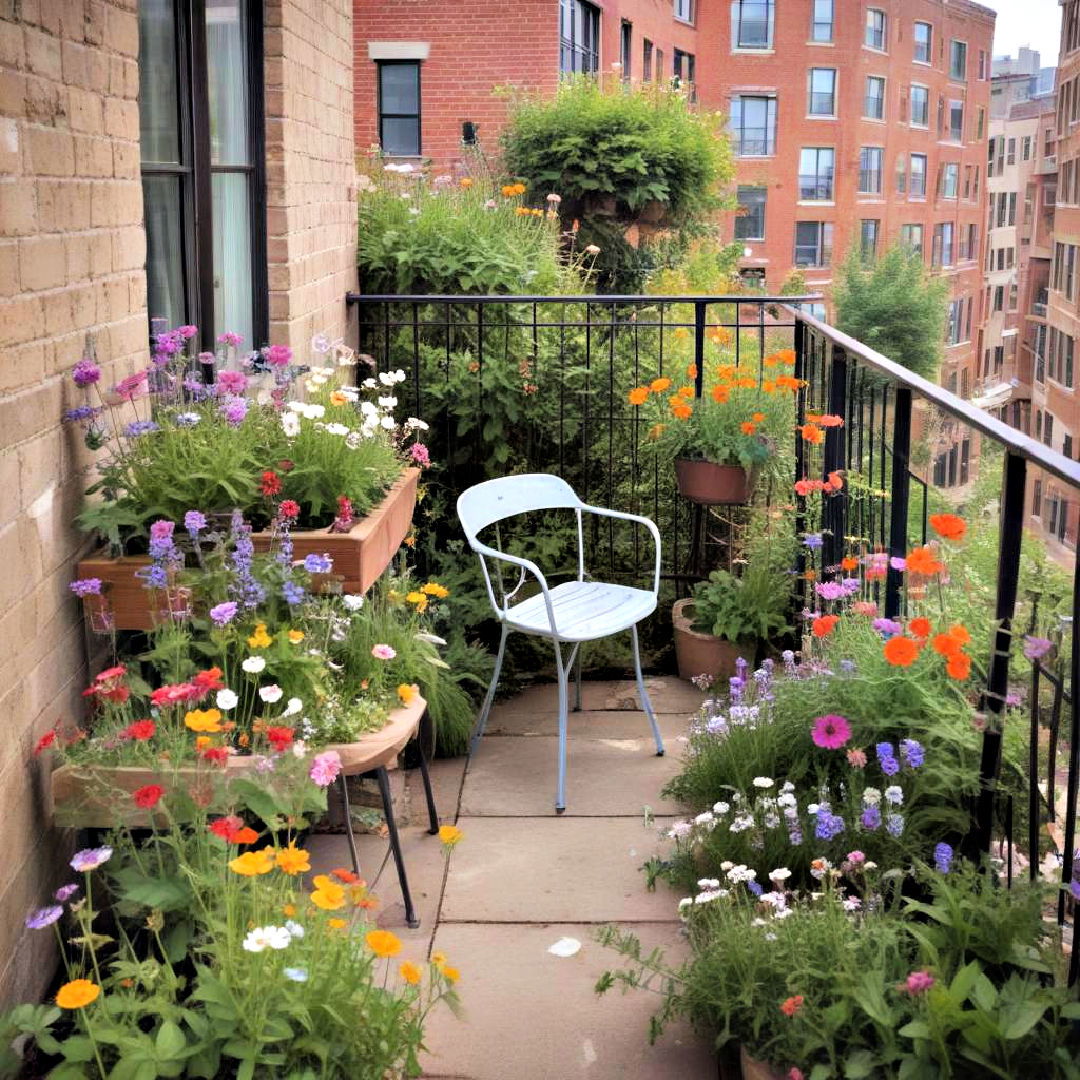
Visualize an urban wild oasis in small spaces like balconies or city yards. Utilize compact wildflower varieties like dwarf cosmos and mini sunflowers. This idea transforms urban settings into lush, green retreats, offering a slice of nature amidst concrete jungles, while also purifying air and reducing urban heat.
10. Shaded Woodland Wildflowers
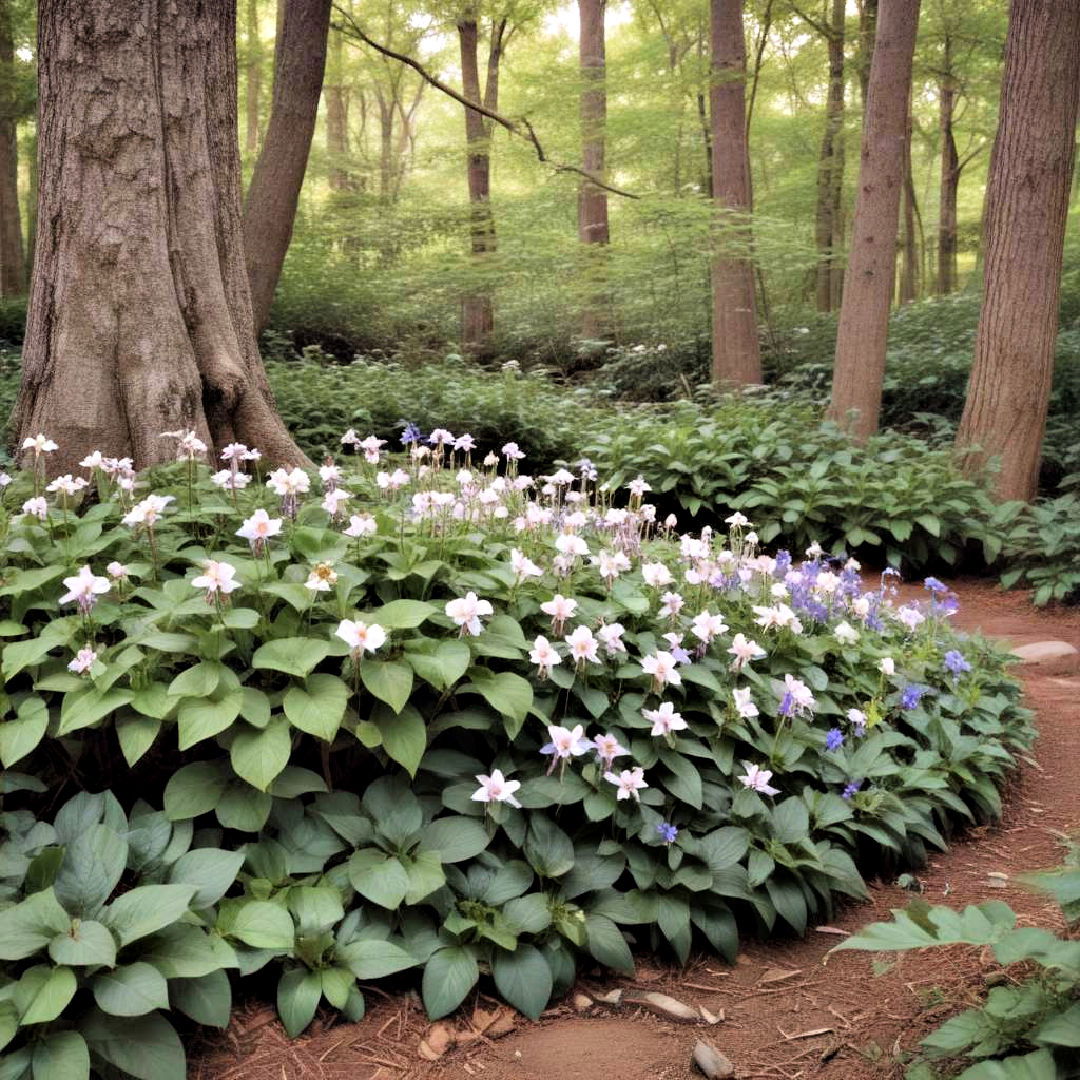
Promote a shaded woodland wildflower garden with species adapted to low-light conditions. Use plants like trillium, wild ginger, and columbine that thrive under tree canopies. These shade-loving wildflowers turn dim garden corners into enchanting woodland retreats, adding depth and intrigue to otherwise overlooked areas.
11. Coastal Wildflower Garden

Imagine a coastal wildflower garden filled with salt-tolerant blooms like sea thrift, yarrow, and beach asters. These plants are adapted to withstand wind and salty air, making them perfect for coastal climates. Not only do they thrive in challenging conditions, but they also bring vibrant seaside colors to your garden.
12. Rock Garden Blooms
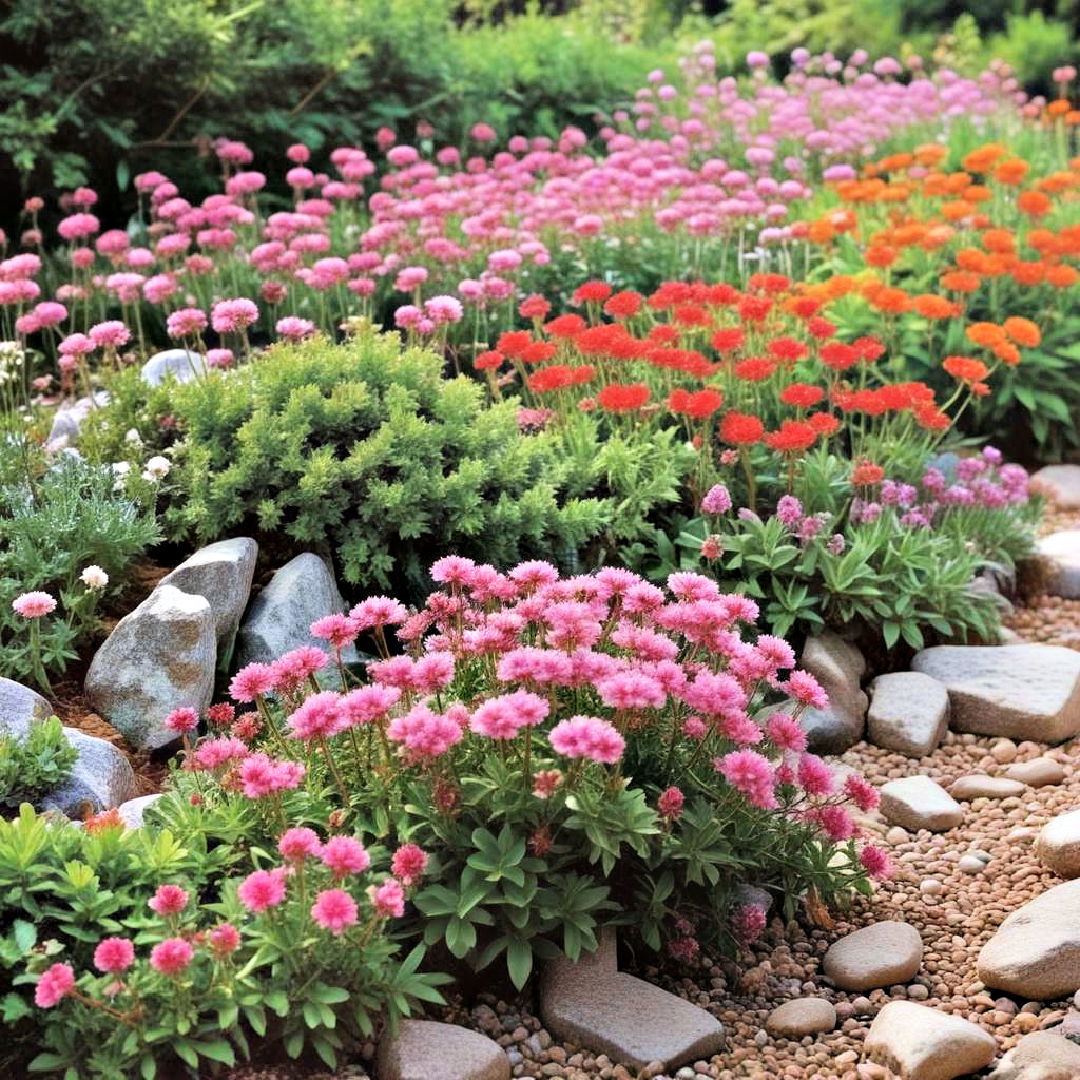
Picture a rock garden blooms setting, which includes wildflowers that thrive in rocky, well-drained soil. Plant species like sedum, dianthus, and saxifrage to create a rugged, natural landscape. This garden style minimizes water needs and adds a unique texture and elevation to your outdoor space.
13. Xeriscape Wildflower Garden
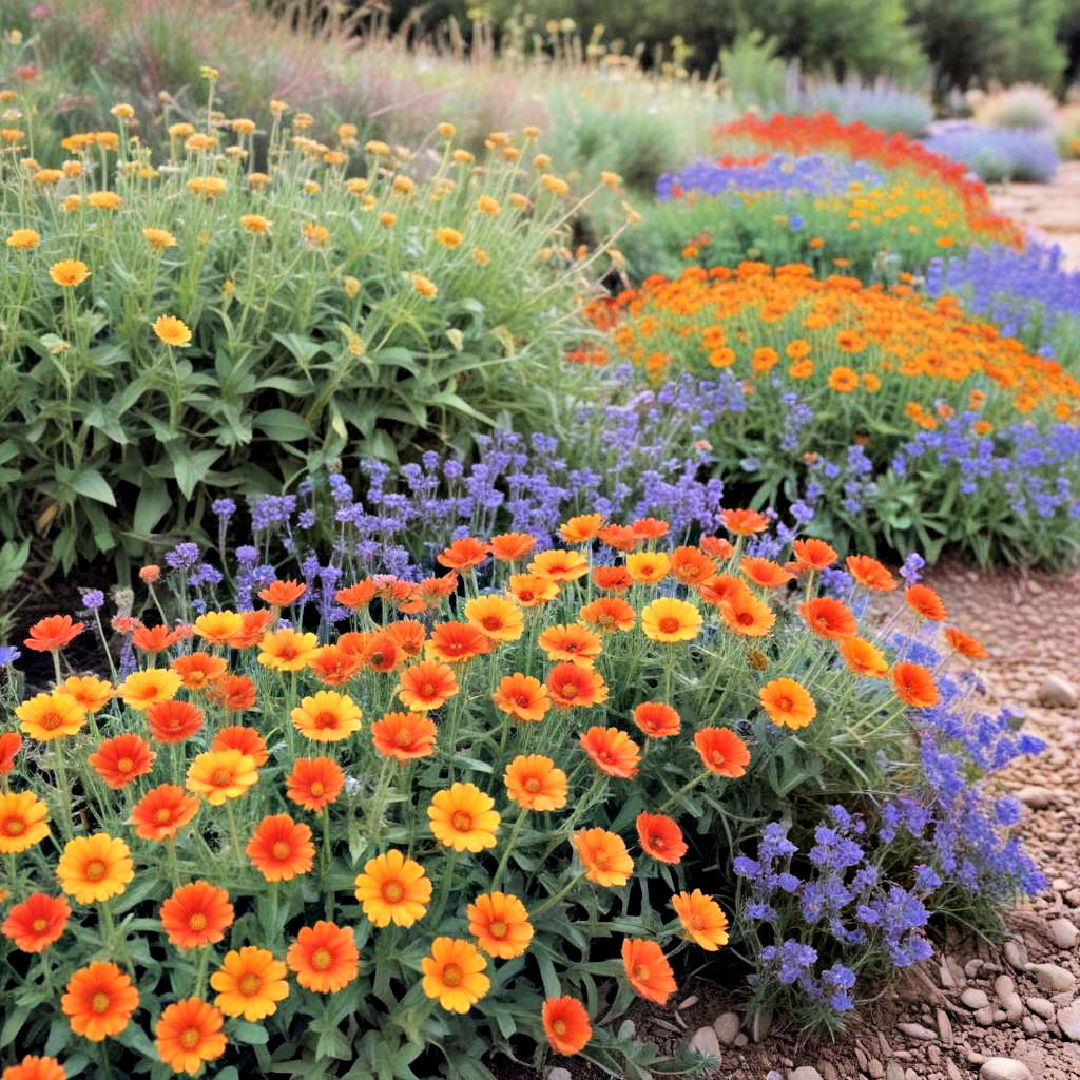
Transform your outdoor space with our front yard wildflower garden design tips. Create a xeriscape wildflower garden designed for dry, arid environments. Use drought-tolerant plants like blanket flower, blue flax, and desert marigold. This garden minimizes water use and maintenance while still offering a colorful, vibrant display - perfect for conserving water resources.
14. Meadow Pathways
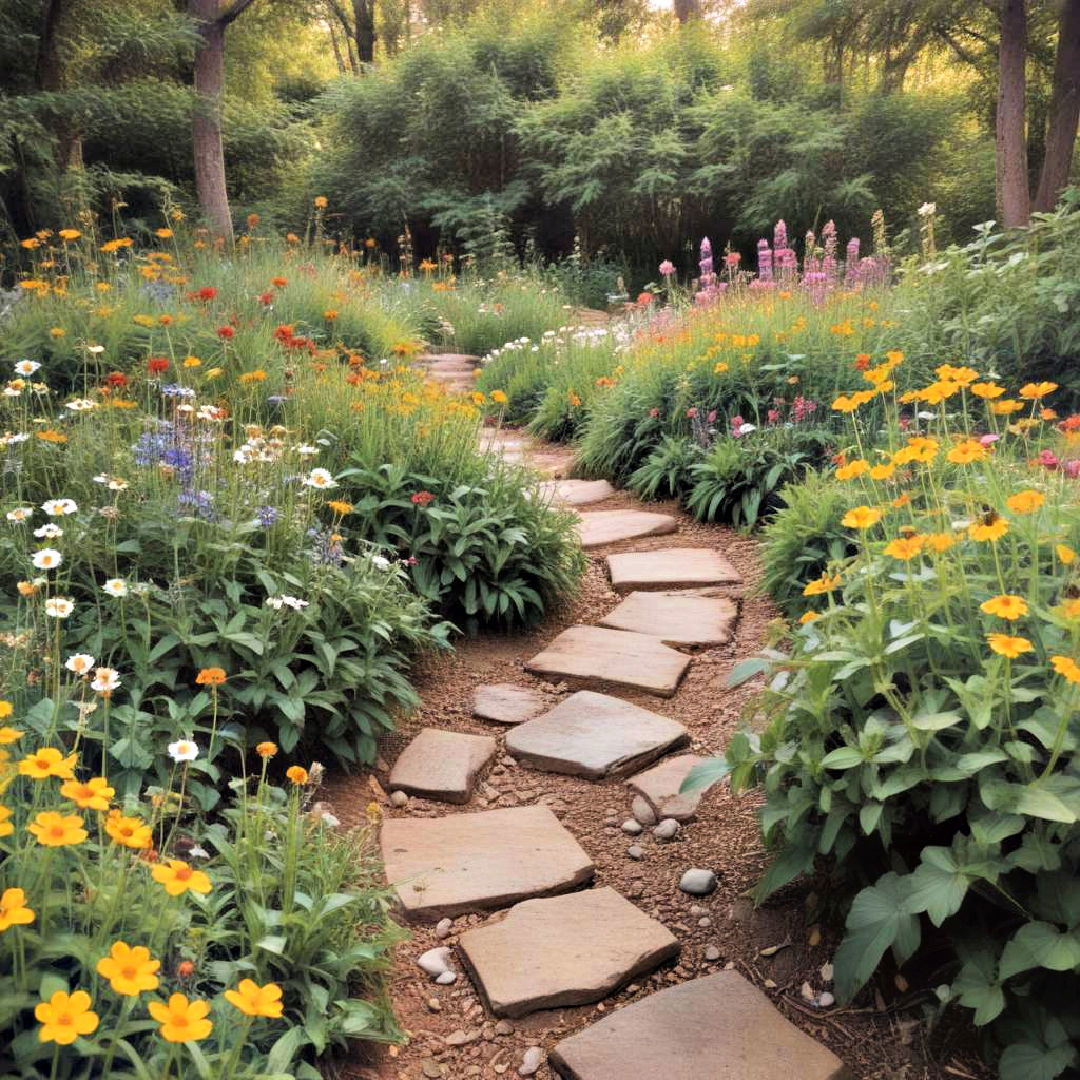
Consider meadow pathways that include winding paths surrounded by wildflowers. Plants like black-eyed Susan, ox-eye daisy, and clover can line naturalistic walkways. This approach turns a simple path into a magical journey through lush, blooming corridors, offering an immersive garden experience.
15. Hillside Wildflower Garden
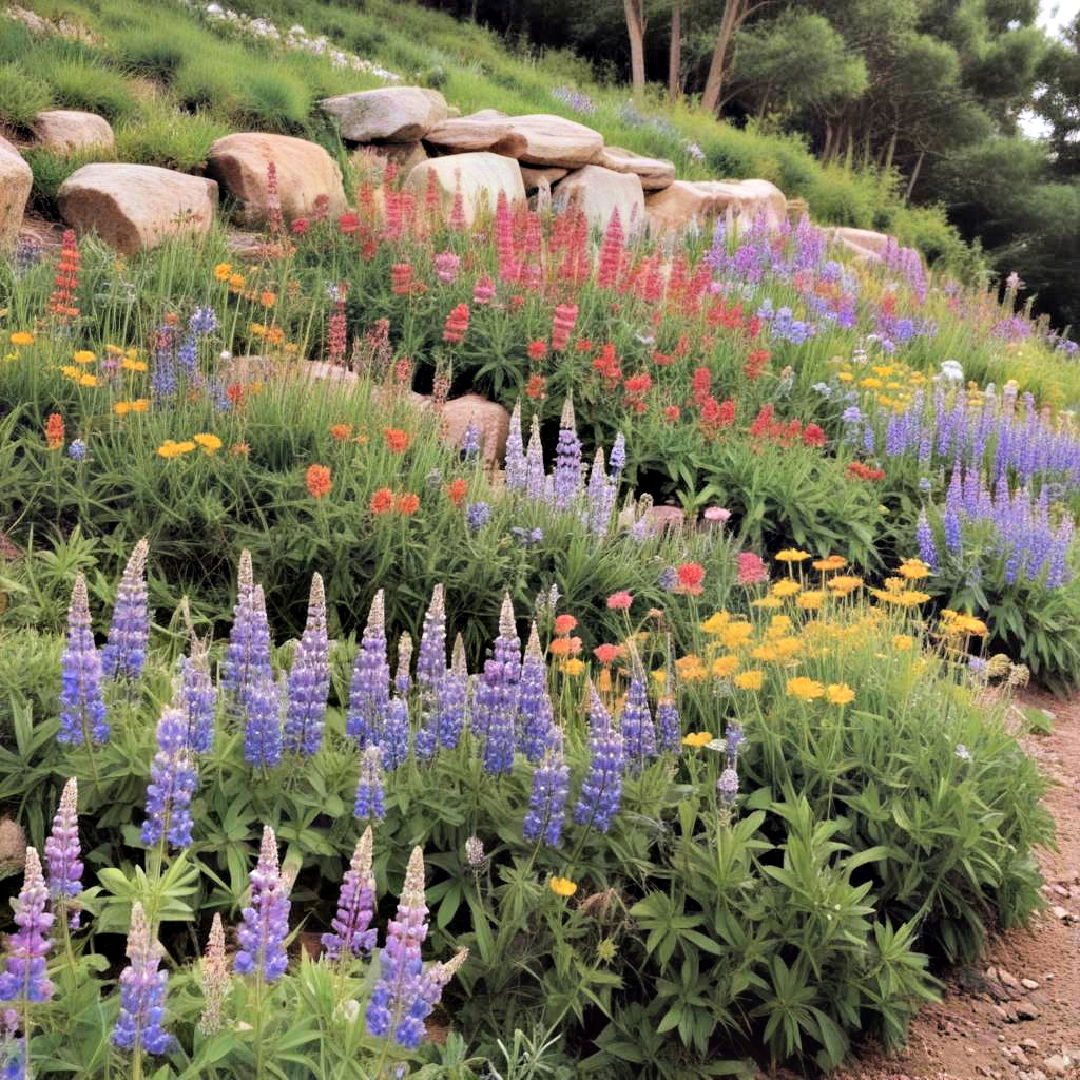
Visualize a hillside wildflower garden that stabilizes and beautifies sloped terrain. Use deep-rooted plants like lupines, wild indigo, and thyme to prevent erosion while adding vibrant color to the hillside. This design approach enhances both the aesthetic appeal and the health of your landscape.
16. Rain Garden Wildflowers
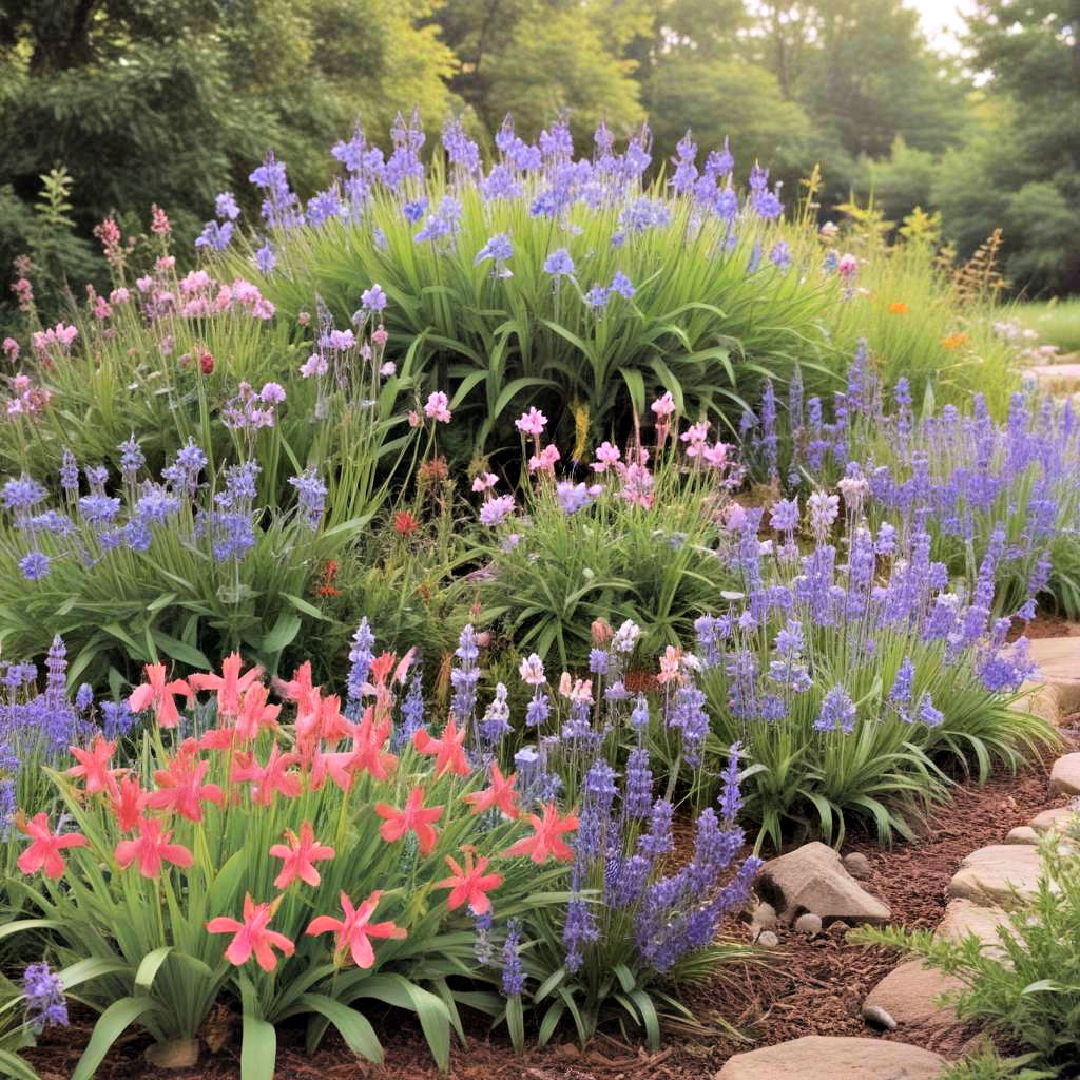
Design a rain garden wildflowers area that manages stormwater runoff while adding beauty. Plant species like blue flag iris, cardinal flower, and swamp milkweed thrive in wet conditions and help filter pollutants. This type of garden promotes environmental sustainability and mitigates flood risks.
17. Evening Blooms Wildflower Garden

Imagine an evening blooms wildflower garden with plants that flower or release scents at dusk. Flowers like evening primrose, four o'clocks, and moonflowers create a stunning nocturnal garden. This concept transforms your outdoor space into a tranquil evening retreat with captivating night-time visuals.
18. Wildflower Lawn Alternative
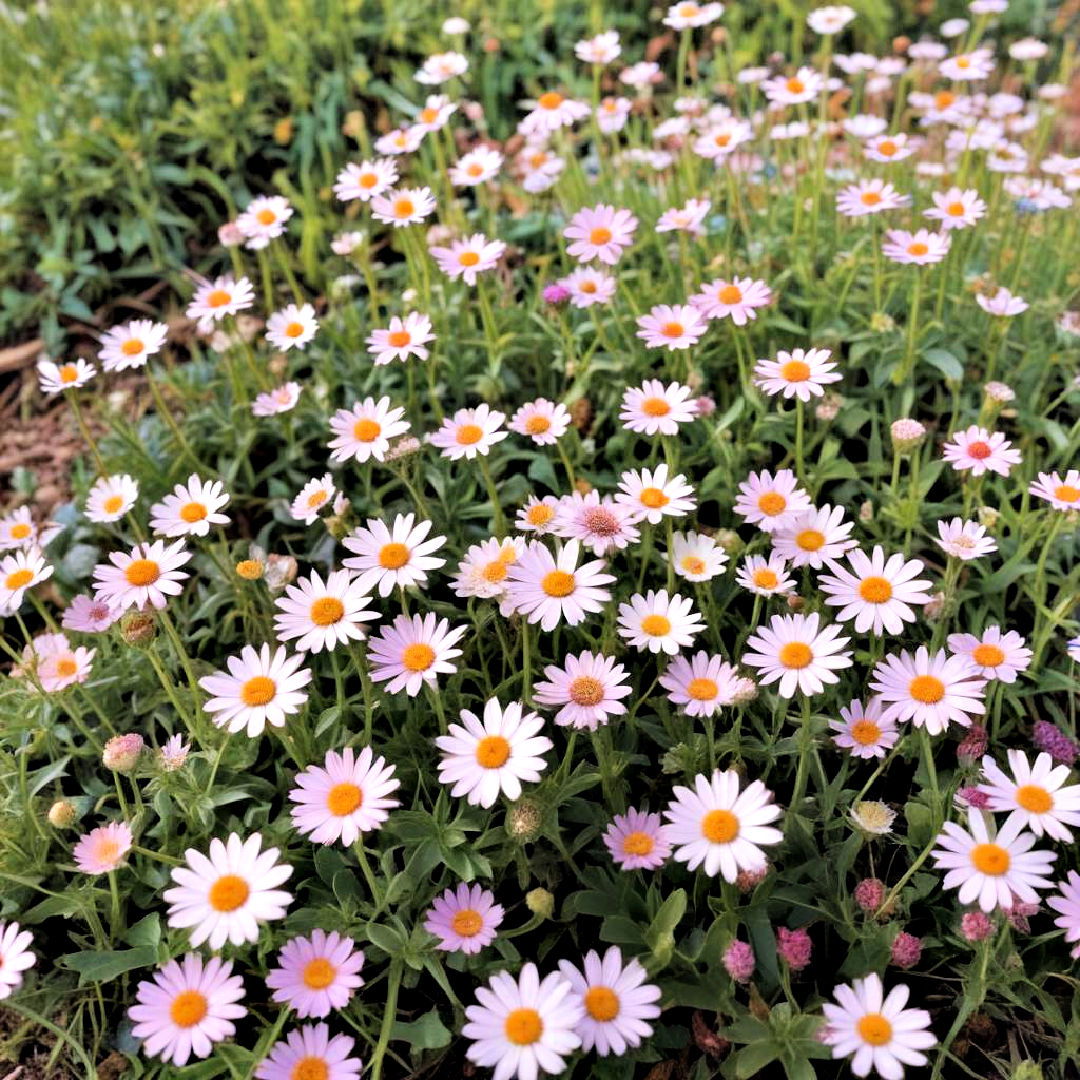
Envision a wildflower lawn alternative to traditional turf grass. Use low-growing wildflowers like clover, alyssum, and daisies to create a colorful, low-maintenance lawn. This alternative is environmentally friendly, requires less mowing, and fosters a habitat for pollinators, enhancing your backyard biodiversity.
19. Healing Wildflower Garden
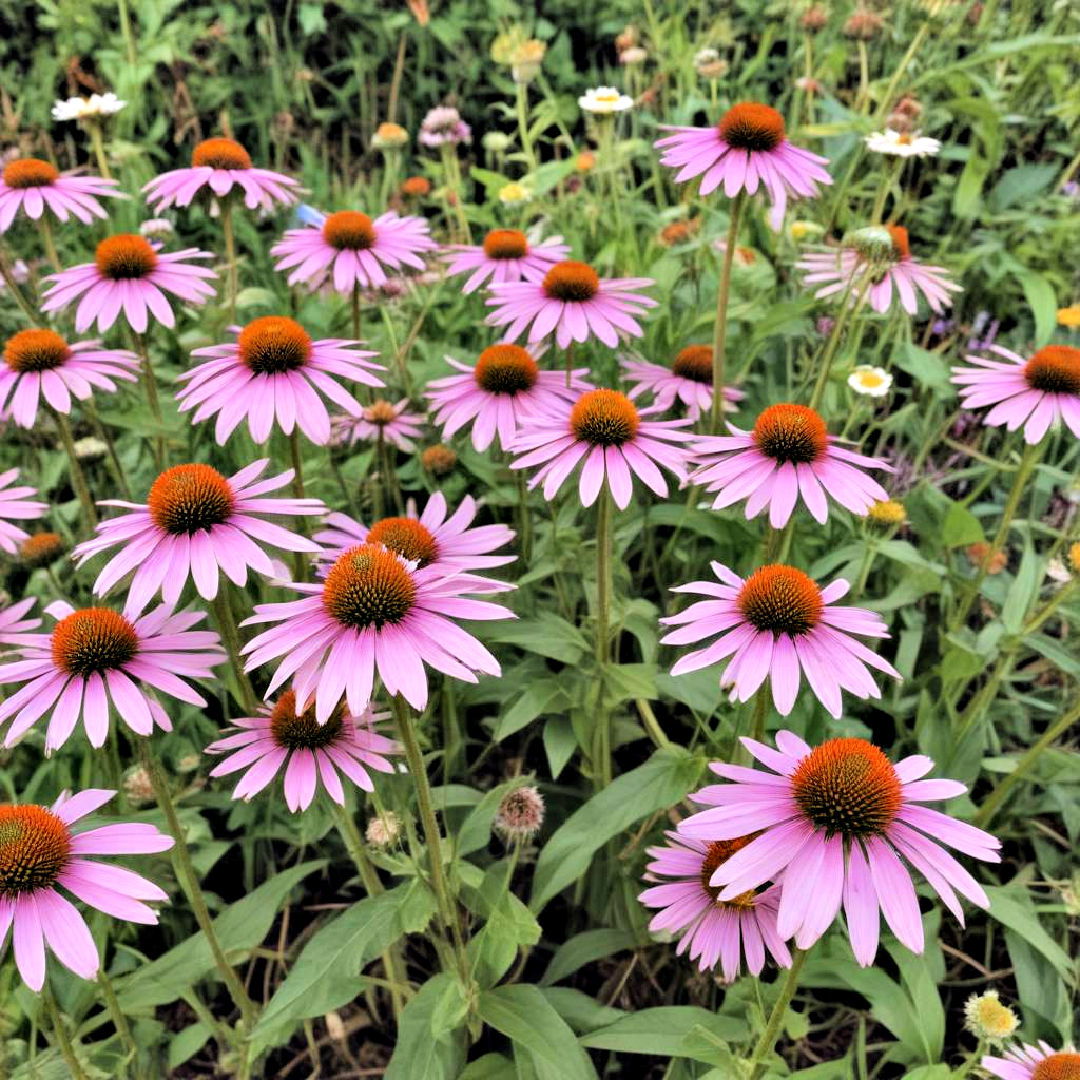
Create a charming sanctuary with a backyard wildflower garden that blooms all season. Consider a healing wildflower garden with medicinal plants like echinacea, lavender, and chamomile. This garden not only provides aesthetic pleasure but also offers a source of natural remedies. Cultivating such plants can enrich your herbal medicine knowledge and enhance your well-being.
20. Fragrant Wildflower Border
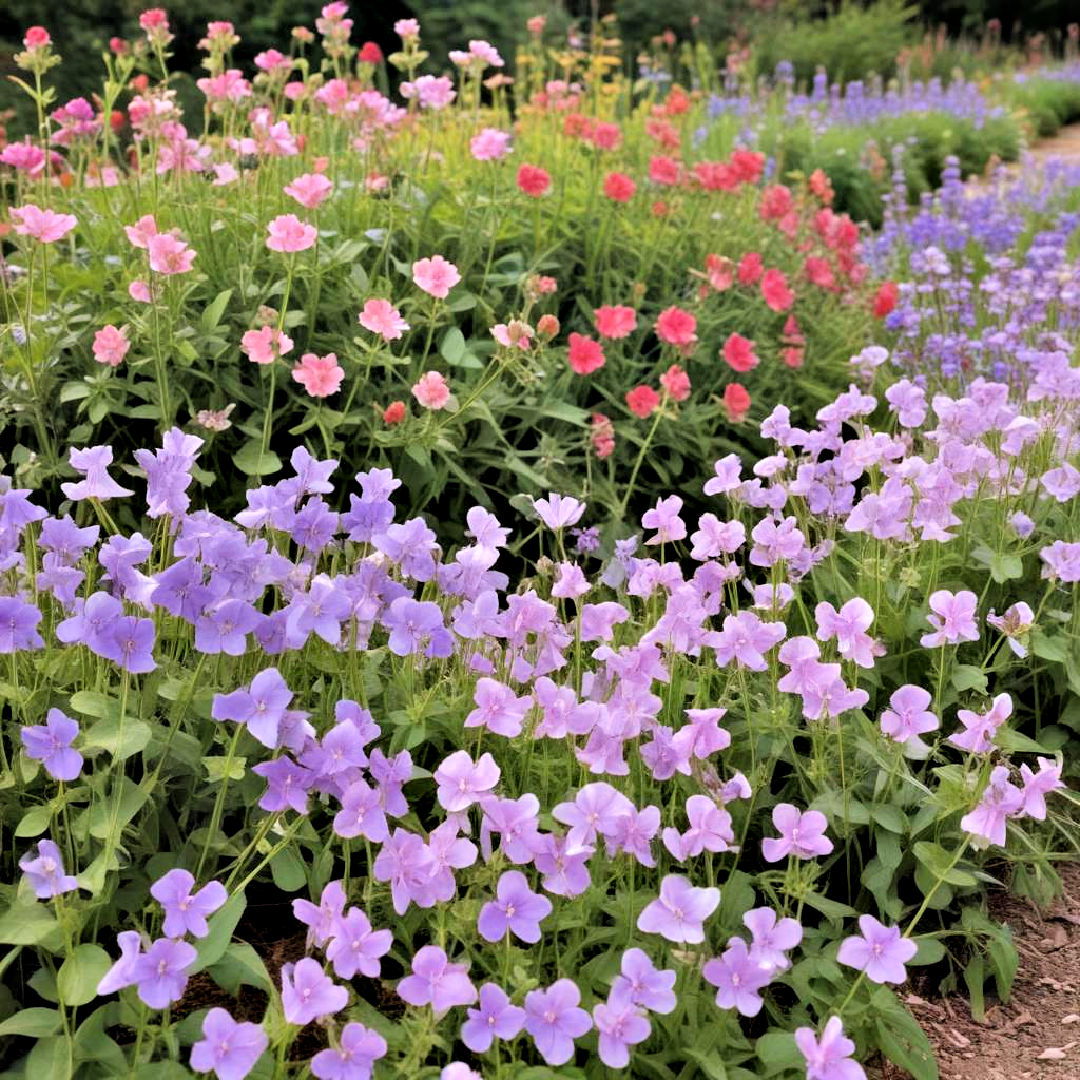
Visualize a fragrant wildflower border that enchants your senses. Incorporate scented flowers like sweet pea, heliotrope, and phlox along pathways or garden edges. This idea adds a delightful aroma to your outdoor space, creating an inviting atmosphere as you walk through or relax in your garden.
Conclusion:
In conclusion, these 20 wildflower garden ideas can help you enjoy beautiful blooms all year. With thoughtful planning and variety, your garden can become a vibrant haven for both you and local wildlife. Enjoy the beauty and benefits of a diverse wildflower garden right at home.

